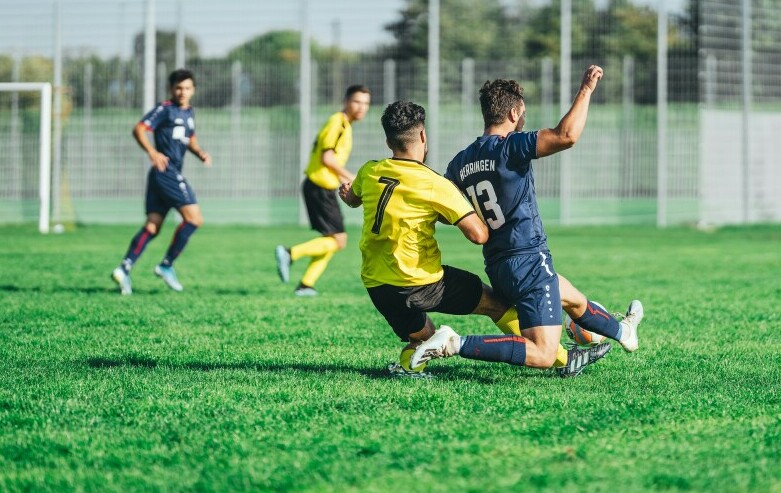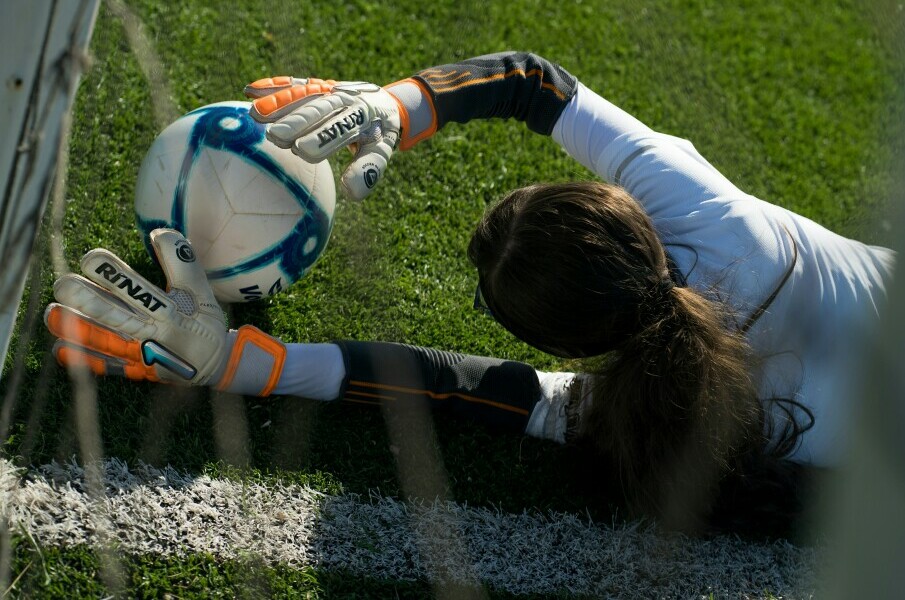Imagine stepping onto a soccer field blanketed in snow, where every touch of the ball becomes a test of skill and resilience.
Winter brings a unique set of challenges to the beautiful game, from frozen pitches to biting winds that can dramatically affect ball trajectory.
For soccer enthusiasts, though, the game must go on, no matter how low the mercury drops.
You’re going to find out about the major hurdles that players face when the climate gets frosty.
We’re talking slippery surfaces that alter the ball’s pace, and how a stiff, cold ball responds differently to those powerful strikes.
That’s why it’s crucial for players to adapt their techniques, not only to maintain those impressive match stats but also for everyone’s safety on the pitch.
Adapting isn’t just about tweaking your playing style; it’s about smart preparation and understanding the environment you’re competing in.
This includes everything from how you dribble the ball to the type of cleats gripping the ground beneath your feet. It’s in-depth, it’s intricate, but don’t worry too much about getting overwhelmed.
I’m here to help you with a tactical approach to navigating these winter fixtures.
And this leads us down a path to what I’m going to talk about next:
Adjusting Dribbling and Passing.
Trust me, with a few modifications to these fundamental skills, you can thrive and not just survive, next time you lace up your boots in icy conditions.
Mastering Touch in the Frost: Adjusting Dribbling and Passing
When the ground freezes and the air gets icy, even the most seasoned soccer players might find it challenging to maintain the same level of control over the ball.
But with a few technique tweaks, you can keep your game hot, even when the temperature drops.
Here’s how to adjust your play to the slick, snowy conditions.
Dribbling aspect.
Shorter touches become your best ally on a frosty field.
Short distances
The less distance the ball travels per touch, the less likely it is to slide uncontrollably on ice or bump unpredictably on hardened, uneven turf.
Precision
Think precision over power: with compact, quick taps, you stay in closer contact with the ball, affording you better command amidst the capricious winter elements.
Use of foot sole
Now, what about the sole of your foot? It’s a surprisingly effective tool for dribbling when the ground resembles a skating rink. Using the sole for dragging and controlling the ball can give you an advantage in stability and maneuverability. You’ll feel more secure, and the ball will be less prone to slipping away.
Ground passes
Passing the ball effectively demands something different in winter conditions. Ground passes can be more reliable when the snow’s piling up because the ball travels through the snowy turf instead of potentially getting carried off course by the wind.
Still, it’s important to gauge the field accurately; if it’s merely cold but clear, a well-measured lofted pass could soar just above a slippery patch, landing neatly with your teammate.
Communication
One more thing: communication is crucial. As the ball tends to move slower in the cold—whether because of snow, a soggy pitch, or even an underinflated ball due to the temperature—you’ll need to up your verbal game.
Clear, loud calls become essential to compensate for decreased ball speed and ensure everyone’s on the same page.
After all, understanding each other’s intentions is half the battle won, even when the other half is against the whims of winter weather.
These adaptations aren’t just about keeping up with your usual play; they’re about transforming challenges into advantages.
Up next, we’ll explore how adapting your shooting techniques can further leverage these winter changes, so you keep scoring goals no matter the forecast.
Precision in the Powder: Shooting and Defending Tactics
Targeting Lower Shots:
Weather conditions, especially the wind and snow, can play havoc with a ball’s trajectory. That’s why you’re going to find out about the merits of keeping your shots low.
Aiming closer to the ground reduces the likelihood of the ball taking an unexpected detour mid-air. Also, it’s much harder for a keeper to react to a ball skimming off the cold, hard surface.
Increased Focus on Technique:
Now, what’s the benefit of doubling down on your shooting technique?
Well, when you’re bundling up against the chill, the extra layers can feel restrictive and impact the crispness of your shots.
I’m going to help you refine your form to ensure that every strike counts, even when you’re swathed in winter gear.
Controlled Tackles: Tackling
—It’s an art form, particularly on slippery pitches. You’re going to find that being more deliberate and precise with your tackles can prevent both you and your opponent from landing in a heap.
Controlled slide tackles might be necessary, but they should be used sparingly and with utmost care.
Positioning:
Good news, though, you can always adjust your approach down the road. Excellence in positioning compensates for the lack of aggressive tackling.
When you anticipate and react swiftly, staying on your feet, you avert the need for perilous plays. And that’s something that resonates with coaches and teammates alike.
Warm-Up for Victory: Encapsulating Winter Adaptation Techniques
As we’ve explored, winter brings a unique set of challenges to the soccer field, yet it also presents an opportunity for players to hone their skills and resilience.
Adapting your soccer techniques for winter conditions isn’t just about staying on your feet on an icy pitch; it’s about maintaining precision, communication, and stamina amidst the elements.
Incorporating shorter touches and using the sole of the foot for dribbling, for instance, is crucial for keeping the ball under control when the ground is less forgiving.
Likewise, understanding when to use ground passes over lofted passes, and the necessity of heightened communication, becomes essential in playing a successful winter game.
Shooting techniques, too, require adjustments. Aiming for lower shots can mitigate the effects of unpredictable winds and surfaces, emphasizing the importance of technique over power in these conditions.
Defensively, precision in tackling and wise positioning can mean the difference between a clean play and a slip-up, taking security into account as well as performance.
Goalkeepers
Goalkeeping in the cold is about staying warm without sacrificing agility, ensuring you can respond quickly to that slick, fast-moving ball. And let’s not forget the importance of proper gear—from cleats that grip to thermal layers that protect—these are the details that support your physical efforts.
Mindset and team work
Finally, fostering a positive mindset and the spirit of teamwork are the intangible elements that will carry you through a frosty match.
It’s not just your feet and hands that need to stay warm; your determination and camaraderie are just as critical to your performance as any technical adaptation.
Take away
So, to the players and coaches braving the cold—embrace these adjustments. Practice these techniques.
Know that every breath in the crisp winter air can strengthen your game in unexpected ways. And remember, as the temperatures drop, your enthusiasm for the game doesn’t have to. Let the winter be a canvas for testing your limits and expanding your capacities.
I encourage you to leave a comment and share any additional tips or experiences you have with adapting soccer skills for the winter season.
Learning from each other is how we all grow stronger. If you’re hungry for more insights, be sure to check out related blog posts for further soccer tactics and advice.
Together, let’s keep the passion for soccer burning brightly, no matter how low the mercury drops.
Happy training.
Here’s a little transparency: Our website contains affiliate links. This means if you click and make a purchase, we may receive a small commission. Don’t worry, there’s no extra cost to you. It’s a simple way you can support our mission to bring you quality content.



2 Responses
I’ve learned a lot about winter conditions, although I live in central Japan, where there is rarely any snow or frost. So, I think I cannot get a chance to try these things out with my local amateur team. Did you know that Japanese football players shout all the time to one another, no matter what the weather? It seems that not shouting may be a cultural thing or perhaps a convention/etiquette. Japan is a collective society, so in general, away from public situations where manners are vital, people enjoy being as noisy as they can.
Btw, do these winter tips apply to soccer as well as football?
Thank you for your insightful comment! It’s fascinating to hear about the unique aspects of Japanese soccer culture. Shouting to one another during play certainly highlights the importance of communication and teamwork, which are essential regardless of the weather conditions.
Even though you may not experience snow or frost in central Japan, some of the winter adaptation techniques can still be beneficial. For example, the emphasis on proper warm-ups and maintaining body heat can be applied in cooler weather, not just snowy conditions. These techniques are designed to keep players agile and prevent injuries, which is valuable in any climate.
Regarding your question, the tips provided for adapting soccer techniques in winter conditions are indeed applicable to both soccer and football. The principles of staying warm, maintaining traction on the field, and ensuring players are properly hydrated and energized are universal across these sports.
Thank you again for sharing your perspective and for your interest in the article. If you have any other questions or need tips tailored to your specific conditions, feel free to ask. Enjoy your training sessions with your team!